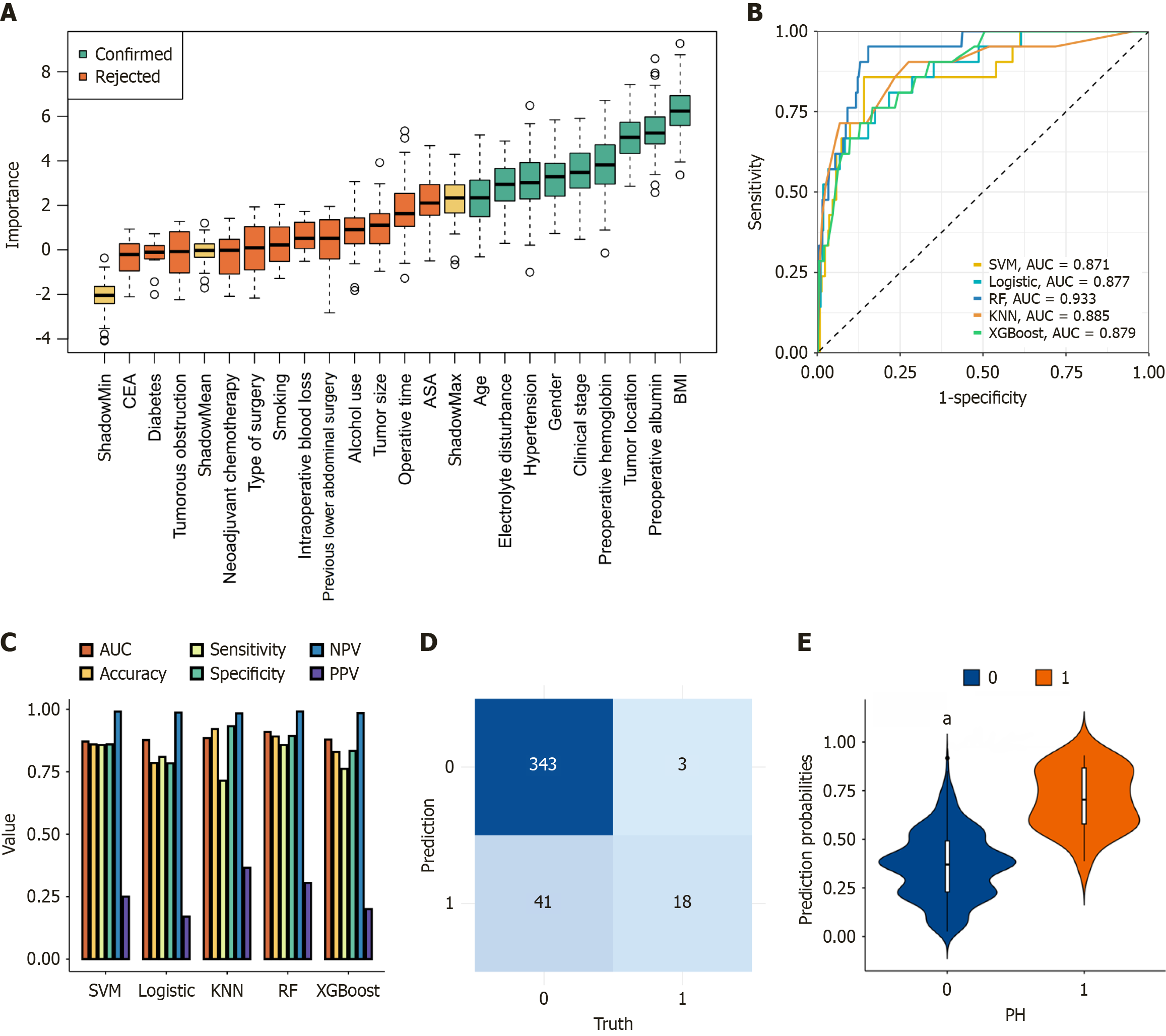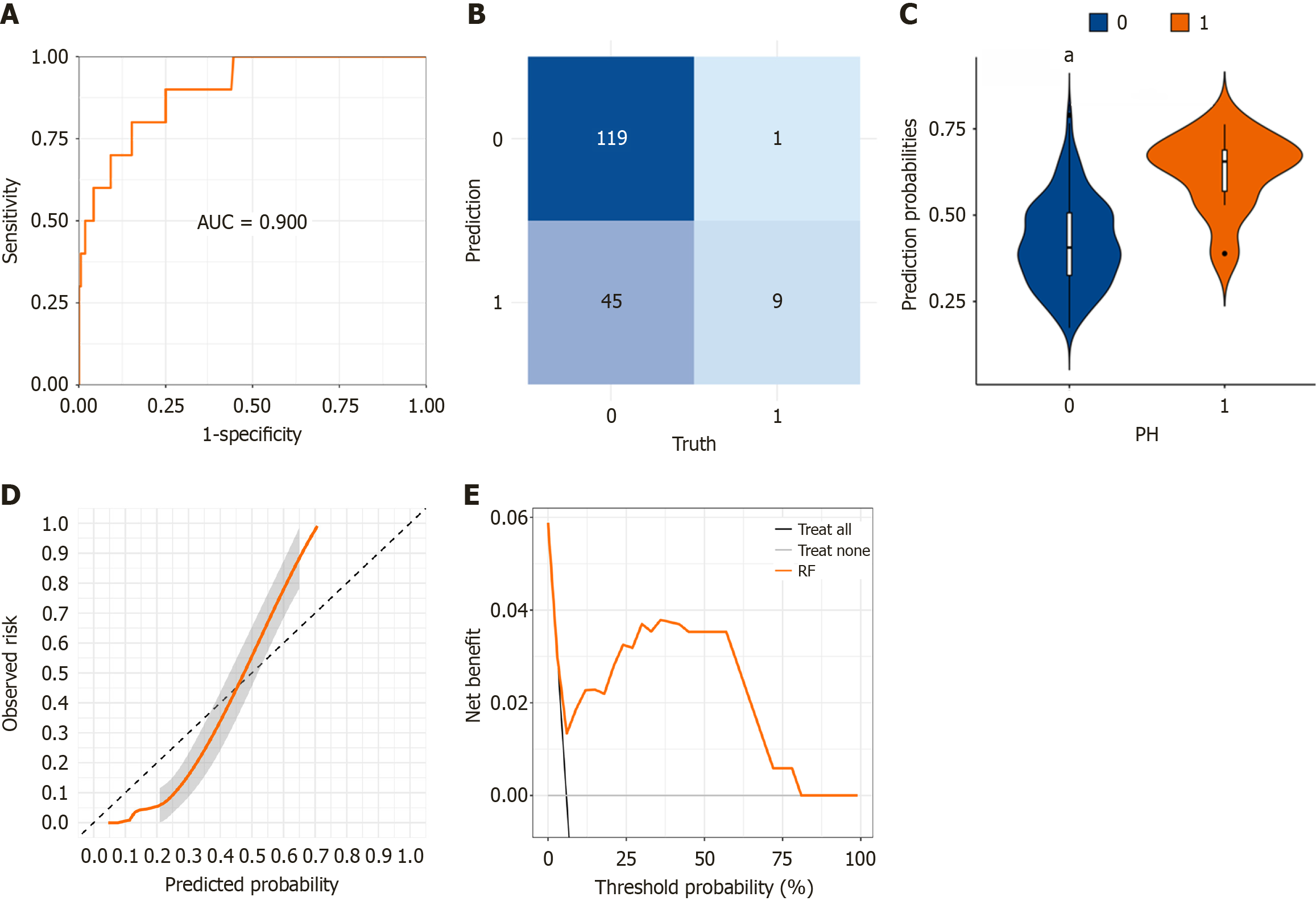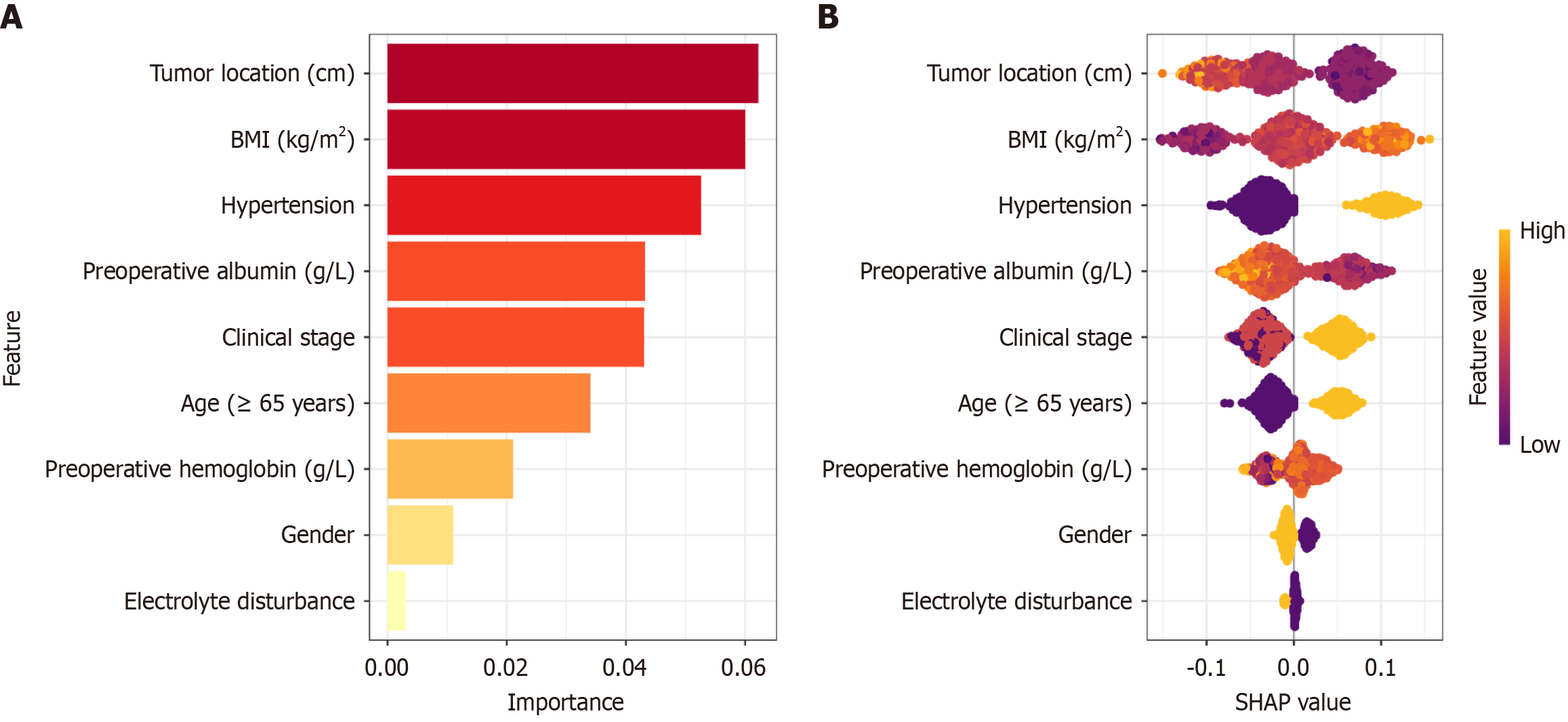Copyright
©The Author(s) 2025.
World J Gastrointest Surg. Sep 27, 2025; 17(9): 107977
Published online Sep 27, 2025. doi: 10.4240/wjgs.v17.i9.107977
Published online Sep 27, 2025. doi: 10.4240/wjgs.v17.i9.107977
Figure 1 Features selection and model performance in the training cohort.
A: Relevant features identified by the Boruta algorithm; B: Receiver operating characteristic curves and area under the curve values for the five models; C: Comparison of performance metrics across all five models; D: Confusion matrix of the random forest (RF) model; E: Comparison of predicted probabilities from the RF model for patients with and without parastomal hernia in the training cohort. aP < 0.001 vs control group. SVM: Support vector machine; LR: Logistic regression; KNN: K-nearest neighbors; RF: Random forest; XGBoost: EXtreme gradient boosting; ASA: American Society of Anesthesiologists.
Figure 2 Evaluation of the random forest model in the test cohort.
A: Receiver operating characteristic curves and area under the curve values for the testing set; B: Confusion matrix for the random forest (RF) model applied to the testing set; C: Comparison of predicted probabilities by the RF model for patients with and without parastomal hernia in the test cohort; D: Decision curve analysis for the test group; E: Calibration curve of the testing set. aP < 0.001 vs control group. AUC: Area under the curve.
Figure 3 SHapley Additive exPlanation analysis of the random forest model.
A: Average absolute SHapley Additive exPlanation (SHAP) values for various clinical features; B: SHAP values illustrating the influence of different clinical features on the model's predictions. SHAP: SHapley Additive exPlanation; BMI: Body mass index.
- Citation: Yang WS, Su Y, Li YQ, Hu JB, Liu MD, Liu L. Prediction of parastomal hernia in patients undergoing preventive ostomy after rectal cancer resection using machine learning. World J Gastrointest Surg 2025; 17(9): 107977
- URL: https://www.wjgnet.com/1948-9366/full/v17/i9/107977.htm
- DOI: https://dx.doi.org/10.4240/wjgs.v17.i9.107977















